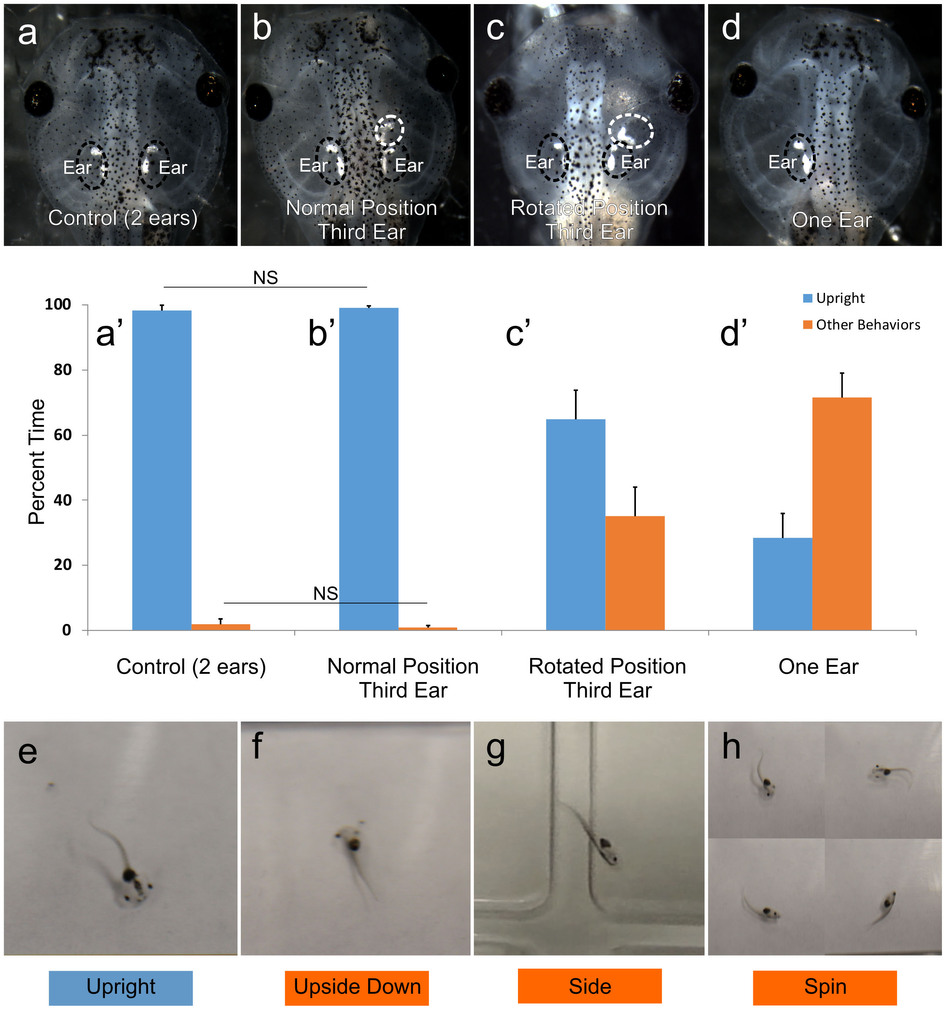XB-IMG-138915
Xenbase Image ID: 138915

|
Figure 2: Swimming behavior of normal (two-eared), ‘three-eared’ and ‘one-eared’ frogs.
Swimming behavior of normal (two-eared), ‘three-eared’ and ‘one-eared’ frogs.
(a–d) Examples of embroys analyzed for their swimming behavior: (a) control, (b) normally-positioned third ear, (c) rotated third ear, and (d) one-eared. (a’–d’) Quantification of percent time spent in various swimming orientations in the first ten seconds of recorded observation for each group of animals: (a’) control (n = 7), (b’)normally-positioned third ear (n = 12), (c’) rotated third ear (n = 11), (d’) one eared (n = 6). Behaviors other than upright swimming (blue) were pooled and referred to as “other behaviors” (orange). All comparisons are significant at p < 0.05 except where noted with horizontal bars and NS, not significant. Error bars reflect the standard error of the means. (e–h) Examples of swimming behaviors observed: (e) upright swimming, (f) upside down, (g) swimming on side, (h) spinning. Image published in: Elliott KL et al. (2015) Copyright © 2015, Macmillan Publishers Limited. This image is reproduced with permission of the journal and the copyright holder. This is an open-access article distributed under the terms of the Creative Commons Attribution license Larger Image Printer Friendly View |
